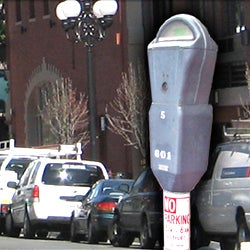Homelessness on City of San Diego Streets Drops by 12 Percent in Annual Count
Region Continues to See Progress, Only Major County in State Where Homeless Declined in Previous Count
Tuesday, April 28, 2020 - NEWS RELEASE
San Diego – Following innovative actions that made San Diego the only major county in the state to see homelessness decrease in 2019, a new report shows the number of people living on City of San Diego streets dropped by 12 percent in 2020, Mayor Kevin L. Faulconer and the Regional Task Force on the Homeless (RTFH) announced today.
Mayor Faulconer was joined this afternoon by City Councilmember and RTFH Chair Chris Ward and RTFH CEO Tamera Kohler to detail the continued downward trend in homelessness throughout the region and to highlight the steps the City of San Diego has taken to make an impact, including recent actions to assist even more homeless individuals amid the coronavirus pandemic.
“This year’s count shows a dramatic reduction in the number of people living outdoors, and that San Diego is continuing to lead with real solutions to this statewide crisis,” Mayor Faulconer said. “Since the count and in response to COVID-19, hundreds more who were living on the streets have found shelter in the San Diego Convention Center and we enacted an eviction moratorium to help prevent folks from losing their home in the first place. We will keep working day and night to overcome this pandemic and help even more people find shelter and housing in the process.”
Conducted annually by the RTFH, the count captures the number of individuals experiencing homelessness on a single night, including those living on the streets, in parks, canyons and riverbeds. It also inventories those currently in shelters.
The January 23 count found that approximately 2,283 individuals were unsheltered, a 12 percent reduction compared to the 2,600 people counted last year. Unsheltered individuals are the most visible segment of the homeless population and include those who traditionally can be the hardest to shelter and house.
“The RTFH’s person-centered approach to the annual Point-In-Time Count has given the San Diego region the tools and information to inform all aspects of addressing homelessness. The mobile technology used this year has helped us survey more people, better understand their needs, and directly translate this into the community action plans and regional policies that shape our response,” Councilmember Ward said. “During the COVID-19 pandemic, these best-practices and new technology have delivered more accurate, actionable data to Public Health Officials and have allowed outreach workers to specifically target at-risk homeless individuals for life-saving services. This data will continue to be analyzed in our ongoing efforts to combat COVID-19.”
In total, 4,887 individuals were experiencing homelessness in the City of San Diego according to the 2020 count, a 4 percent reduction when compared to the 5,082 individuals counted last year. That figure includes a 5 percent increase in the number of people in shelters and transitional housing, a positive sign that indicates more are being connected to supportive services that help to end the cycle of homelessness.
San Diego County was the only major Continuum of Care jurisdiction in California that saw a drop in homelessness in 2019, a trend that continued this year with another decrease of 6 percent in the region.
“The Point-In-Time Count is one of many planning and policy tools of the Regional Task Force. This innovative use of new technology and best-practice approach lead by outreach across the region is delivering the most accurate street-based count our region has ever conducted,” Kohler said. “This level of effective, accurate reporting of information is only achievable with the dedication of over 1700 volunteers and our many partner organizations, along with the staff at the RTFH.”
The City has taken steps in response to the coronavirus pandemic to continue to reduce homelessness during the crisis, including enacting a temporary eviction moratorium and sheltering in the San Diego Convention Center hundreds of additional individuals who were living outdoors.
Operated by the City, County, RTFH and San Diego Housing Commission, one of the core missions of “Operation Shelter to Home” at the convention center is to find permanent housing for individuals. Case managers and housing navigators are focused on identifying the most appropriate exit strategy for shelter clients and working to end their cycle of homelessness, with the goal of decreasing the number of individuals experiencing homelessness in San Diego even further.
Dozens of agencies and government officials from Los Angeles, Seattle, Portland, New Orleans and Vancouver, as well as Housing and Urban Development Secretary Ben Carson, have visited the innovative programs over the past few years. Secretary Carson has recognized the City both for its efforts in housing and homelessness.
Under Mayor Faulconer, the City has said “Yes” to more housing and homeless services across the city. The latest reduction follows a series of actions including:
- Opened four temporary bridge shelters to provide beds and housing connections to nearly 1,000 individuals each night.
- A comprehensive, 10-year plan for the City of San Diego. The City’s Community Action Plan on Homelessness builds on recent progress, lays out short-term goals and will serve as a guide for long-term success in addressing homelessness.
- Making it easier and cheaper to build housing with policies intended to increase housing affordability and supply, including reforms like by-right permits for permanent supportive and transitional housing, and removing costly parking mandates.
- Cleaning up streets by tripling storage capacity for homeless individuals to safely keep their belongings while they access services, go to work or attend school.
- Expanded safe parking lots to provide individuals and families living out of their vehicles with a safe and secure place to sleep at night.
- Opened the City’s first Housing Navigation Center to serve as an anchor to San Diego’s care network and as a one-stop-shop for individuals to access a variety of services under one roof.
- Created the Neighborhood Policing Division within the San Diego Police Department with homeless outreach teams to help address neighborhood quality-of-life issues. The team was recently integrated into the City’s Get it Done mobile app to more efficiently address community reports related to homelessness.
- Investing in programs that work, including the Downtown San Diego Partnership’s Family Reunification Program, the Wheels of Change work program, the Landlord Engagement and Assistance incentive program and the Resource Access Program to help frequent 911 callers.
- Successfully securing support from Sacramento and Washington D.C. for funding to assist the City in addressing homelessness.























